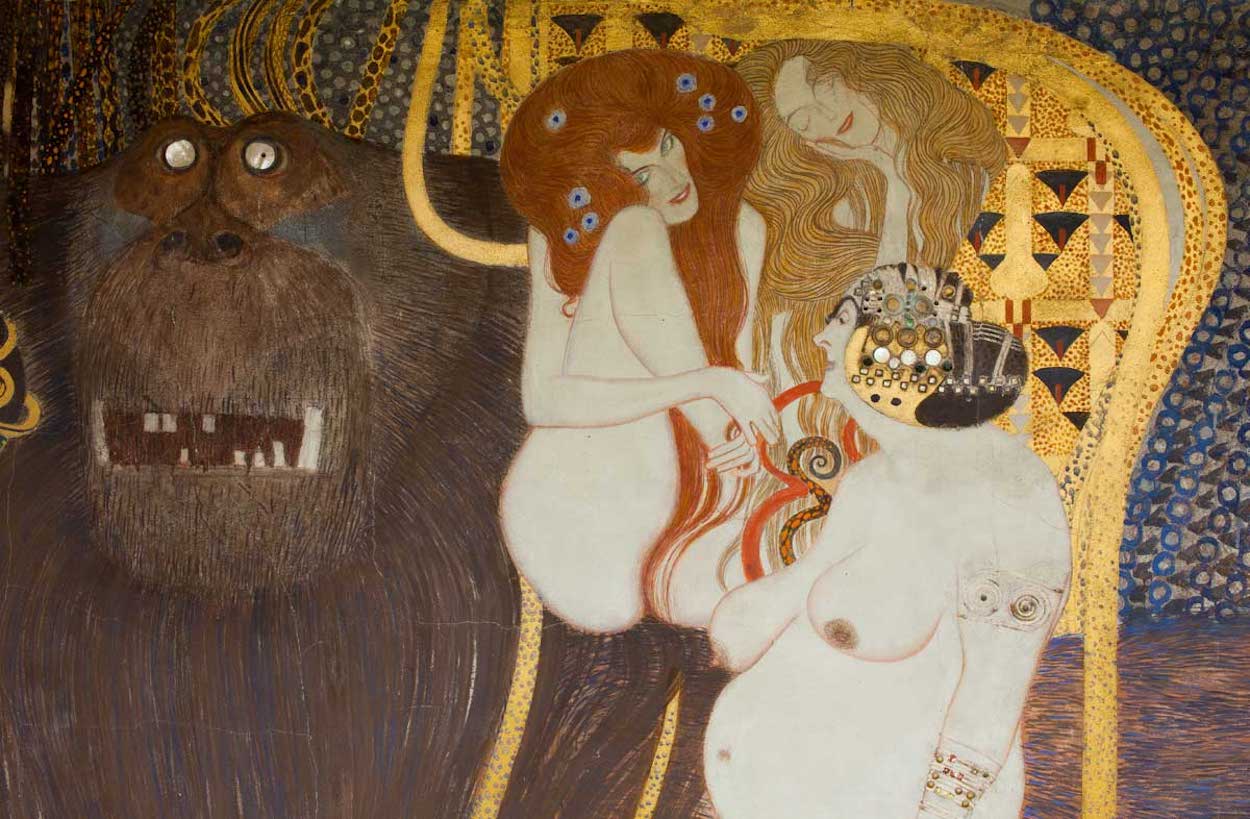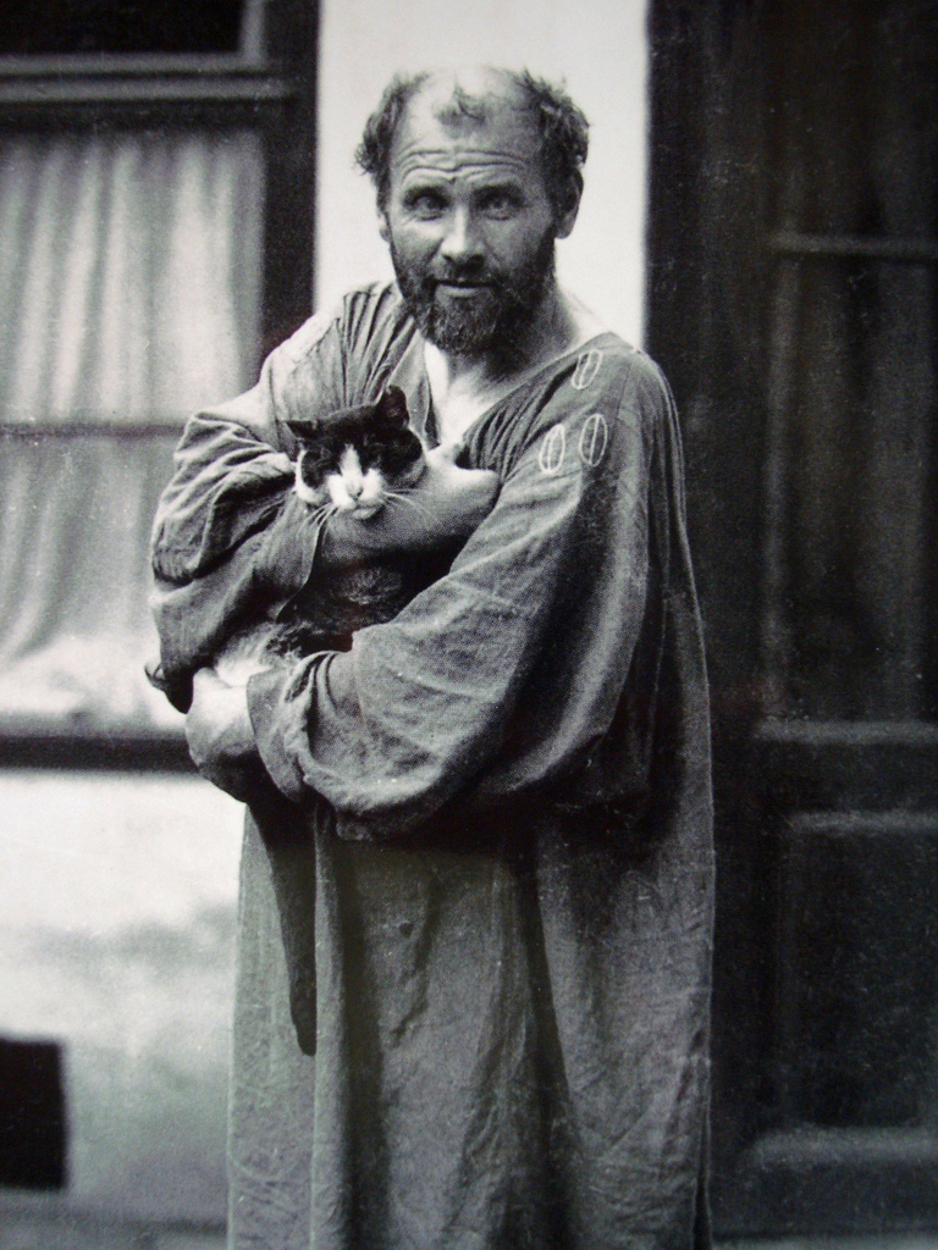In 1901–2 Klimt worked on a groundbreaking decorative cycle, the Beethoven Frieze, which was displayed in the Secession building. It was a painted interpretation of one of the greatest musical compositions ever written, the final choral movement of Ludwig van Beethoven's Ninth Symphony.
Today we want to present only a detail of the Frieze which runs across three walls of a long and narrow room. The first wall of the frieze starts to the left with a long chain of floating genii, symbols of the "yearning for happiness," a motif that reappears in other parts of the cycle and connects single scenes. The central wall of the Beethoven Frieze features the "hostile forces" that are confronted on the way, such as three gorgons and a redhead "Lasciviousness." Seductive and ominous, she exemplifies the femme fatale that populated much European art about 1900.
Lasciviousness is surrounded by Wantonness and Intemperance. The gorilla on the left is a huge, multiform monster from the Greek mythology - Thyphon, who was the father of three Gorgons, also presented on the Frieze. The monster with the face of a gorilla, the body of a snake and the wings of a bird of prey is wearing a crown.
Of course, the conjunction of a gorilla with nude figures shocked the critics who labelled the work "obscene", "pathological" and "painted pornography". Who knows the works of Gustav Klimt and his fellow artist knows that it was nothing new to Vienna around 1900.
Have a great weekend!




Beethoven Frieze: This Kiss to the Whole World (Detail: Lasciviousness)
fresco •
 Gustav Klimt
Gustav Klimt